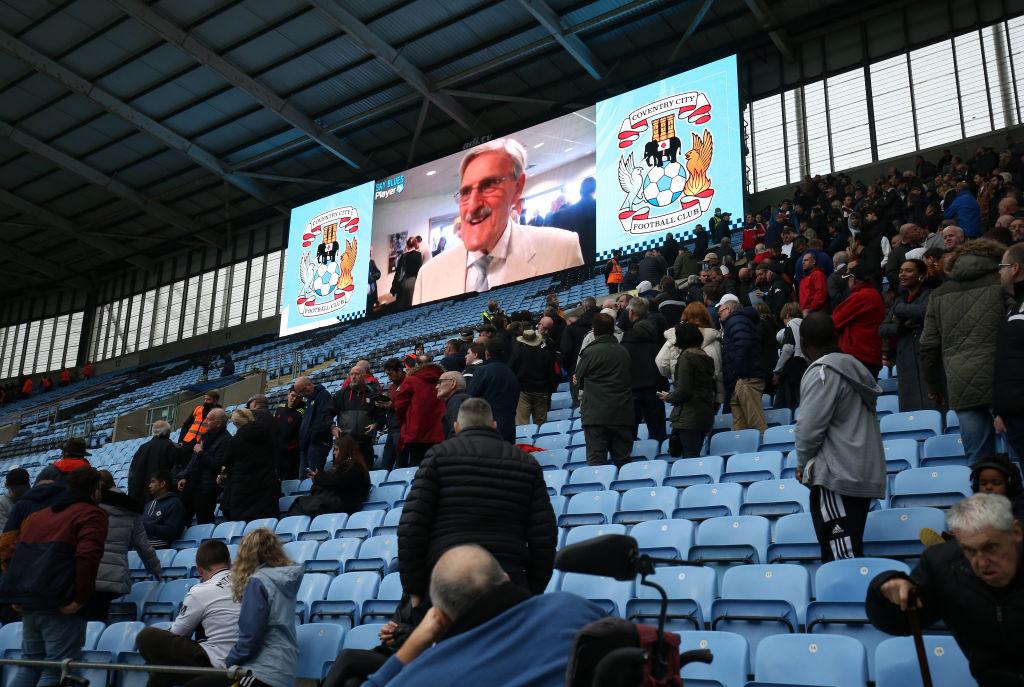Last Saturday's visit to Coventry was Jimmy Hill's day. And if the bearded one was watching from above, he would have been content to witness the visitors winning the first half and the home team the second.
Sadly for Fulham supporters, the goals (and the points) were not evenly shared. Leading 1-0 at the interval Marco Silva's men trudged off 4-1 losers at the end.
All was fine at the start. Timely interventions by Harrison Reid and Alfie Mawson had blocked two Coventry attacks before Fulham went ahead in the 17th minute. Racing through on the left, Antonee Robinson won a corner which Neeskens Kebano sent swirling into the penalty area and as Aleksandar Mitrovic and Kyle McFadzean grappled for the ball it bounced off the defender's head for an own goal.
The second half saw a dramatic change. In recent matches, Fulham have played from the back without mishap. Who could have expected Tim Ream and Josh Onomah to bump into each other and allow Viktor Gyokeres an open goal?
Antonee Robinson was the next culprit, albeit an unlucky one. He stuck out his foot, giving Matt Godden the opportunity to fall over and secure a penalty. Unashamed by his artifice Godden thumped the ball past Paulo Gazzaniga.
A sudden and unanticipated lack of concentration, visible in Fulham for the last quarter of the Swansea game, was evident throughout Saturday's second half. Coventry added two further goals, which were of decent quality, whilst the visitors could only collect yellow cards.
Mitrovic, the recipient of a body check, harangued the referee and earned an avoidable booking. Fulham had hoped to go into the international break near the top of the table so Marco Silva issued a gracious apology on behalf of his players.
Fulham are now fifth, just a point ahead of Queens Park Rangers; that should make for an interesting West London derby match when the Championship resumes.
BFI film
After a visit to the H&F Archives I can follow up my earlier blog on the BFI's one-minute film of Fulham v Bury in 1912.
The film shows the home team taking the field first and Alex White, the club's official historian, has identified the order in which they appear: Fred Mavin, Arthur Reynolds, Jimmy Sharp, Pat Collins, Jimmy Smith, Jimmy Torrance, Tim Coleman, Ted Charlton, Bert Pearce and Willie Walker. The eleventh man – Alf Marshall – must have delayed his entry as he was not caught on camera.
One report of the match stated: "Marshall was very weak at the commencement but did better as the game proceeded." Perhaps he was suffering from a dodgy stomach.
We also see Fred Mavin the captain tossing the coin and the Bury skipper opting to play towards the Hammersmith End. According to Fulham director Henry Norris:
"Bury had the good fortune to win the toss (so) the home side had both wind and sun against them rendering it most difficult to see the ball." This may partly explain the scrappy nature of the play that we see.
Any group photo of young men taken in the early 1910s almost inevitably prompts us to wonder how many of the subjects survived the First World War. In the case of the Fulham eleven who faced Bury that day the refreshing answer is that they all did.
Alex White has written a paper for Wolverhampton University entitled 'Fulham Players and the First World War' from January 2020. The club had its share of casualties – but the 1912 team that faced Bury all came through. Most of them, as Alex shows, were given essential war work in munitions factories and dockyards – dangerous enough and no guarantee against military conscription. Outside the football season the team's manager Phil Kelso also took on war work.
Several players saw action. Tim Coleman joined the Footballers Battalion and served in the front line throughout the War, cheating death on several occasions. While my blogs about him are no longer available on the H&F website, I would gladly email a copy to anyone interested. George Myerson's book 'Fighting for Football' (Aurum 2014) gives full details of Coleman's military exploits.
Willie Walker served in Salonica, Egypt and Palestine between 1916 and 1918, contracting malaria, which undoubtedly hindered his subsequent football career.
Jimmy Sharp, who enlisted in the Black Watch in 1915, was wounded and taken prisoner. He re-joined Fulham after the War as team trainer.
The footballers also suffered bereavement in their families, like Alf Marshall who lost an elder brother Thomas at the Somme.
In those days it was club policy for players to live locally. At the time of the Bury match Mavin, Walker and Marshall, all from the North East of England, were lodging at 45 Fernhurst Road, Fulham. Alfred married Ninon Gladstone Pearce, his landlord's daughter, at the nearby Church of St Peter in 1913 and the couple continued to live in the Fernhurst Road House till 1920.
After the First World War, Alf's sister Bertha married his old team-mate Willie Walker and the couple lived in Darlington when Walker's playing career ended.
Interestingly on the 1911 Census, Fred Mavin is shown as a brass finisher and Alf Marshall as a bricklayer. Only Willie Walker admitted to being a professional footballer.
In June 1920, Alf signed for Oldham Athletic. His descendants have preserved his contract, which shows that he received a signing-on fee of £10 and the standard wage of £8 per week. Initially successful at his new club, he suffered a decline in his health and died in June 1923 from a brain tumour.
Tim Coleman died in an accident at work in 1940, but we believe that the nine remaining players also survived the Second War (information on Jimmy Smith's later career is scanty).
The views expressed in this blog are those of the author and unless specifically stated are not necessarily those of Hammersmith & Fulham Council.
Want to read more news stories like this? Subscribe to our weekly e-news bulletin.

